Abstract
In many instances the cheapest and quickest way of controlling trypanosomiasis is to reduce the number of vectors and the opportunities for contact between man and vector. For permanent results, moreover, eradication of the vectors is necessary, since eradication of trypanosomiasis by chemotherapeutic means has so far not proved feasible.
For a variety of reasons, game destruction as a method of fly control is gradually being replaced by other methods. Of these, the complete removal of bush cover will always effectively eradicate tsetse flies, but in order to save time, labour and money, partial clearing (selective or discriminative) is more usually resorted to. Provided this is preceded by extensive and accurate surveys of fly infestation, it is generally successful.
Blanket applications of insecticides from aircraft or from ground aerosol machines can give good and rapid results; however, as knowledge of the habits and behaviour of Glossina species grows, the discriminative application of insecticides can be made more precise, economical and effective. This method of using the residual insecticides seems to be the most promising for the future.
Full text
PDF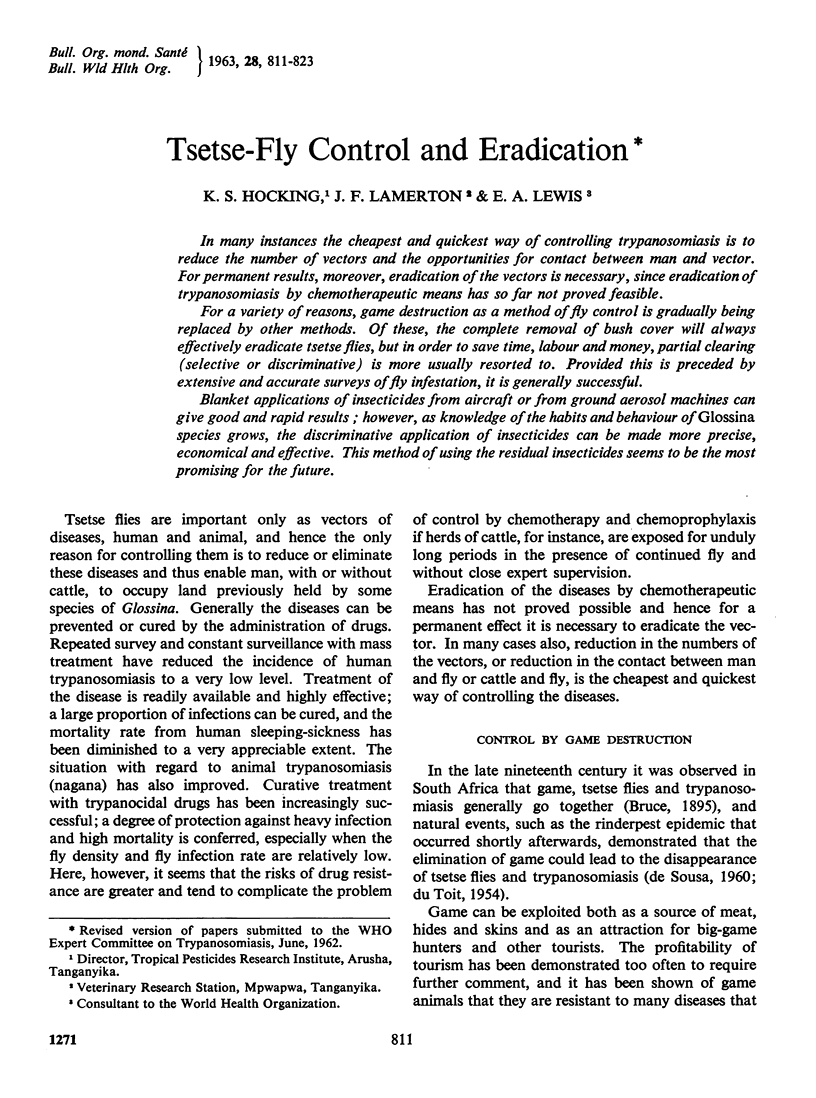
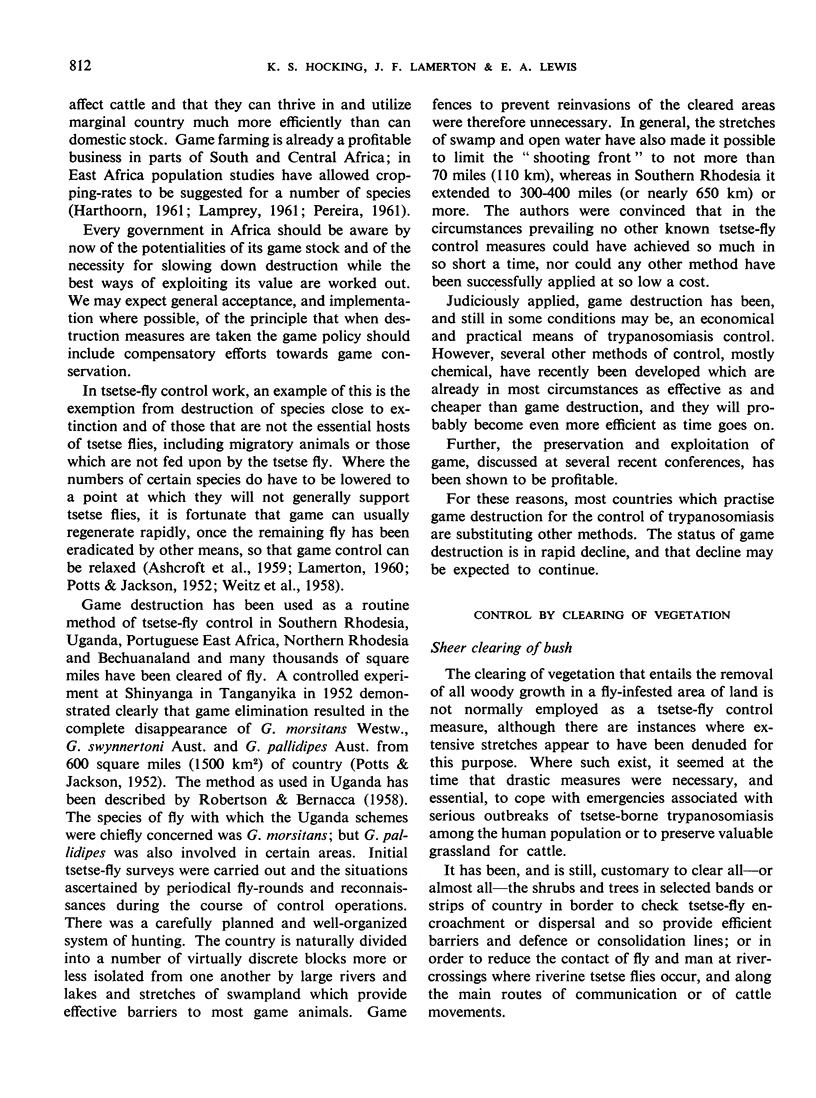
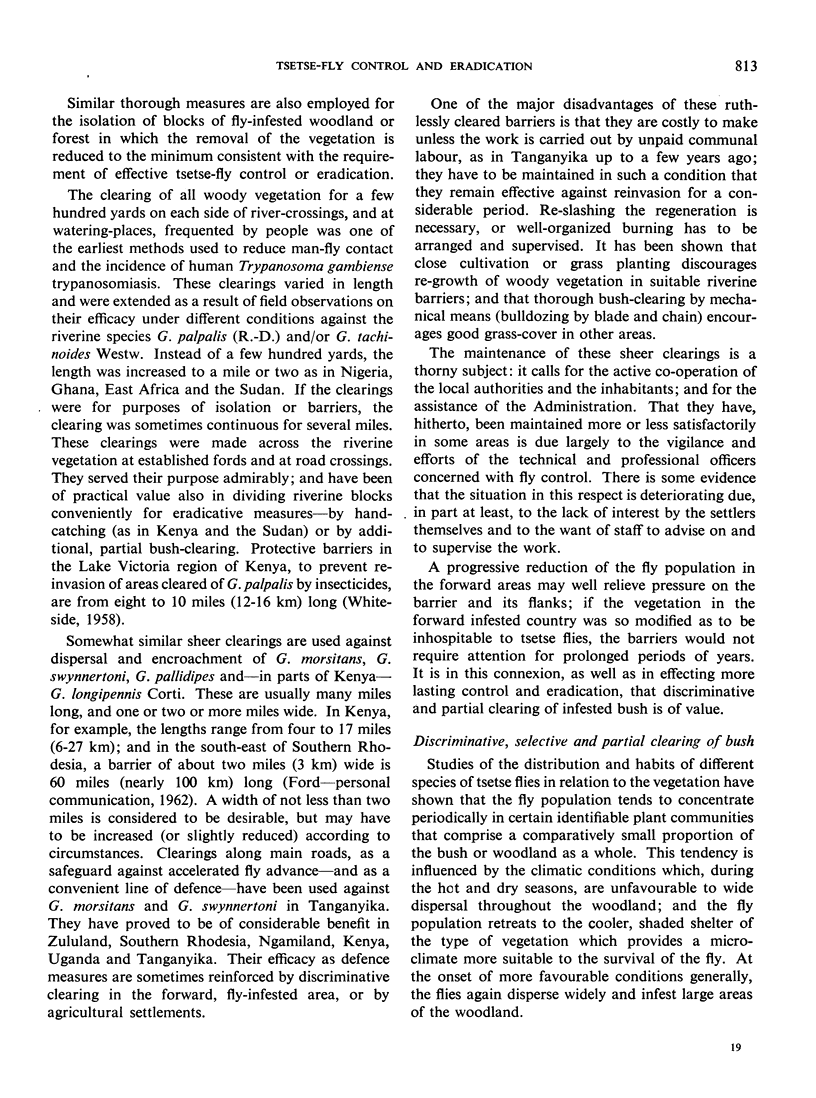
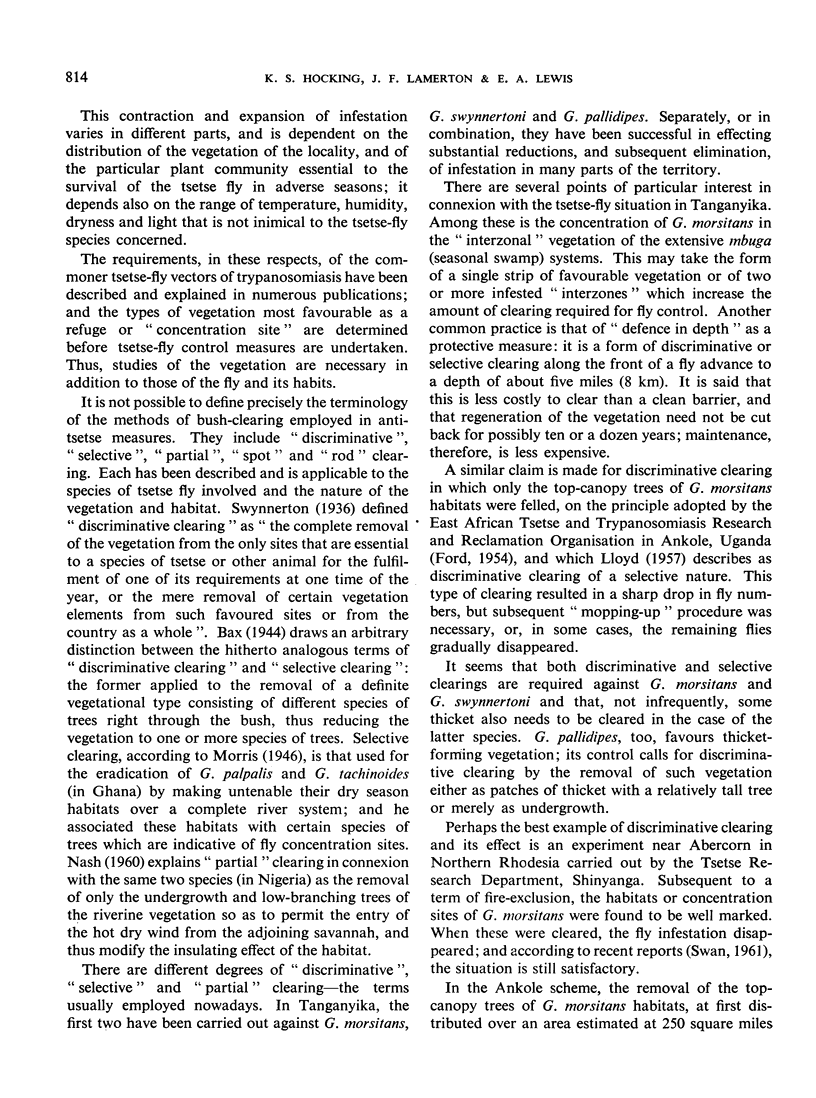
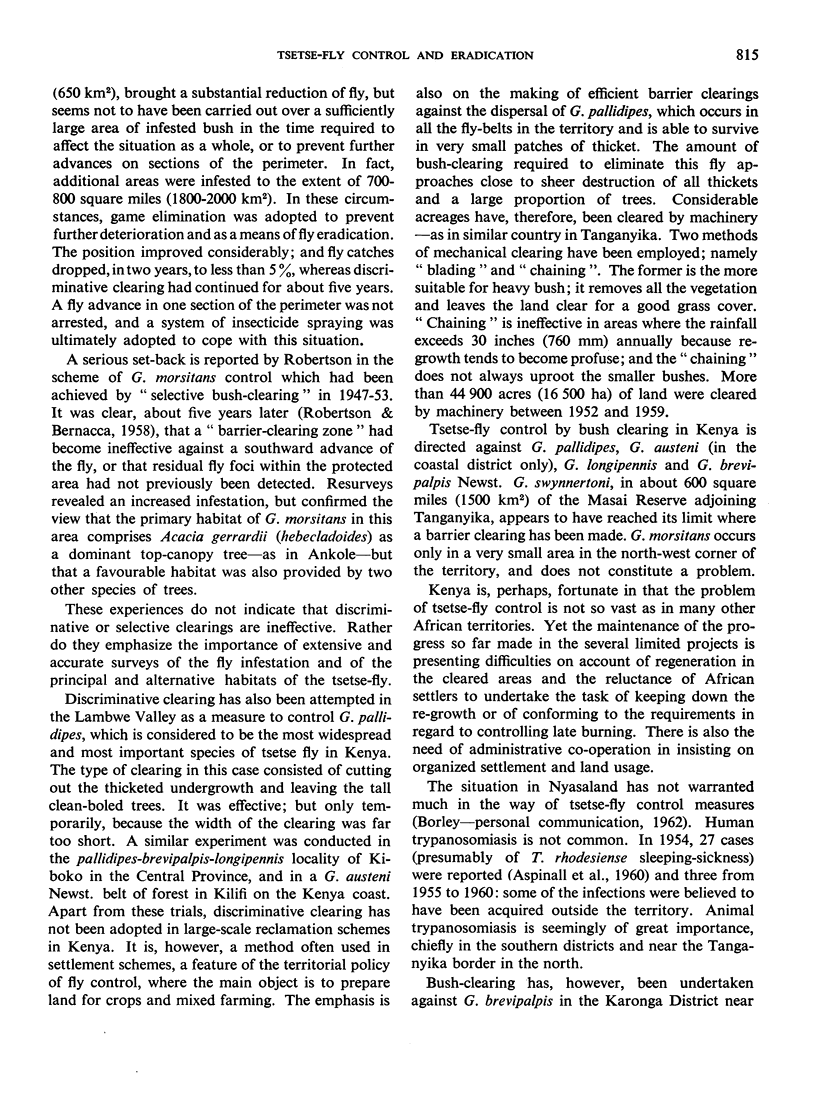
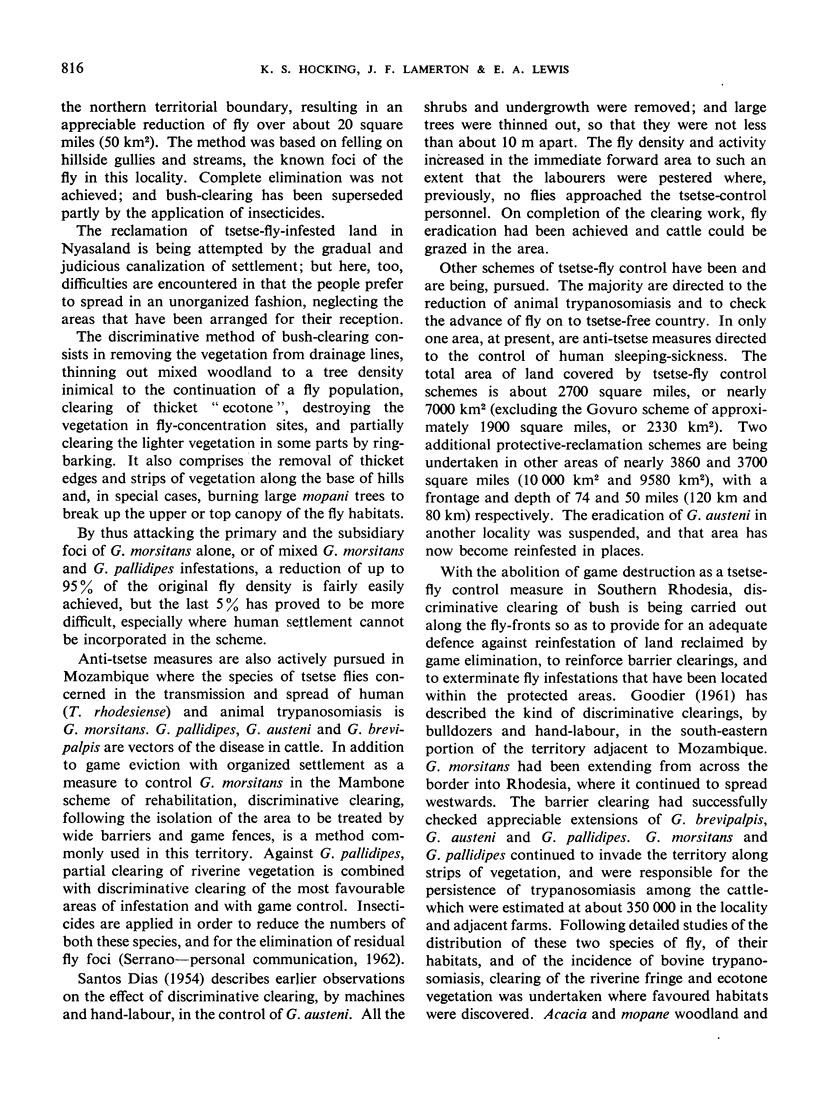
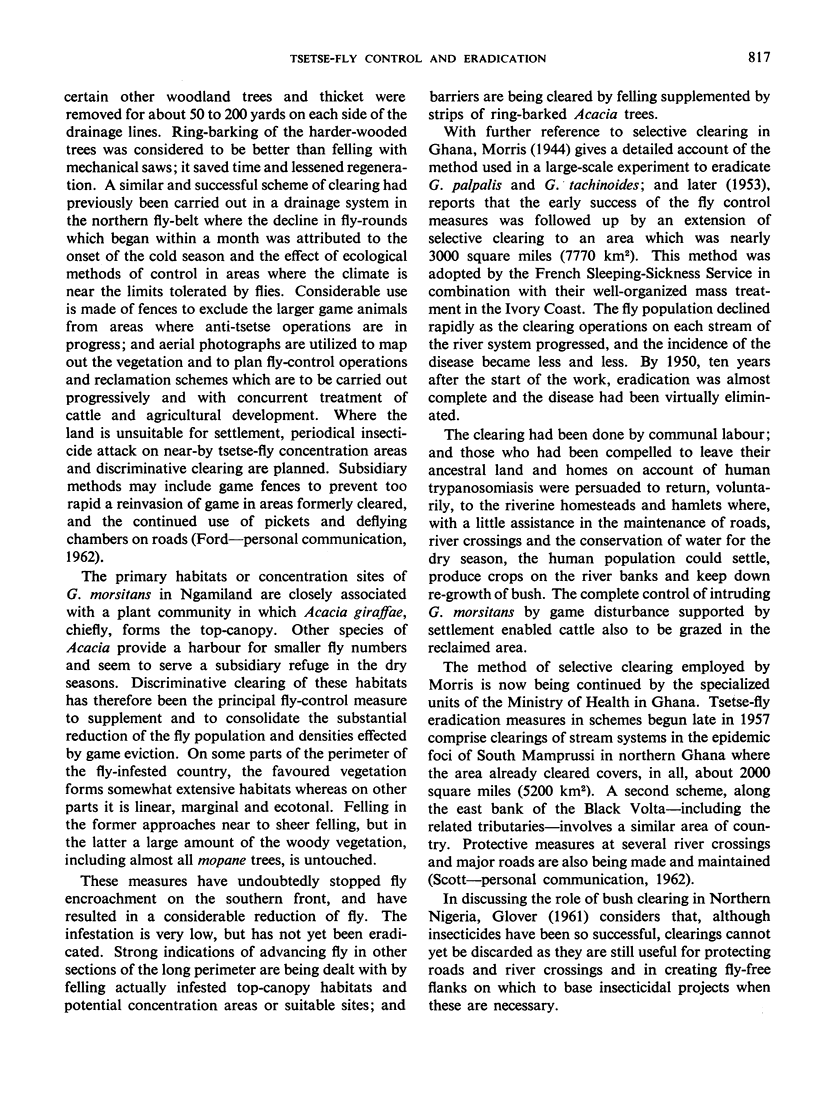
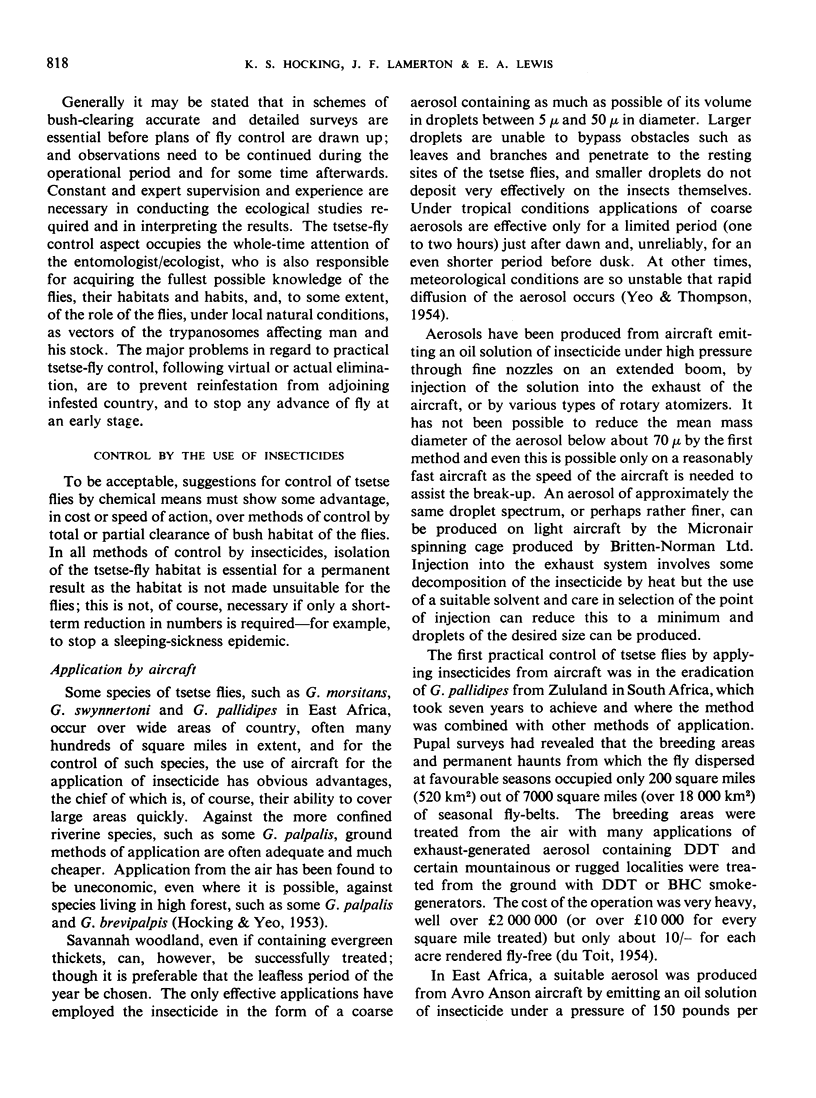
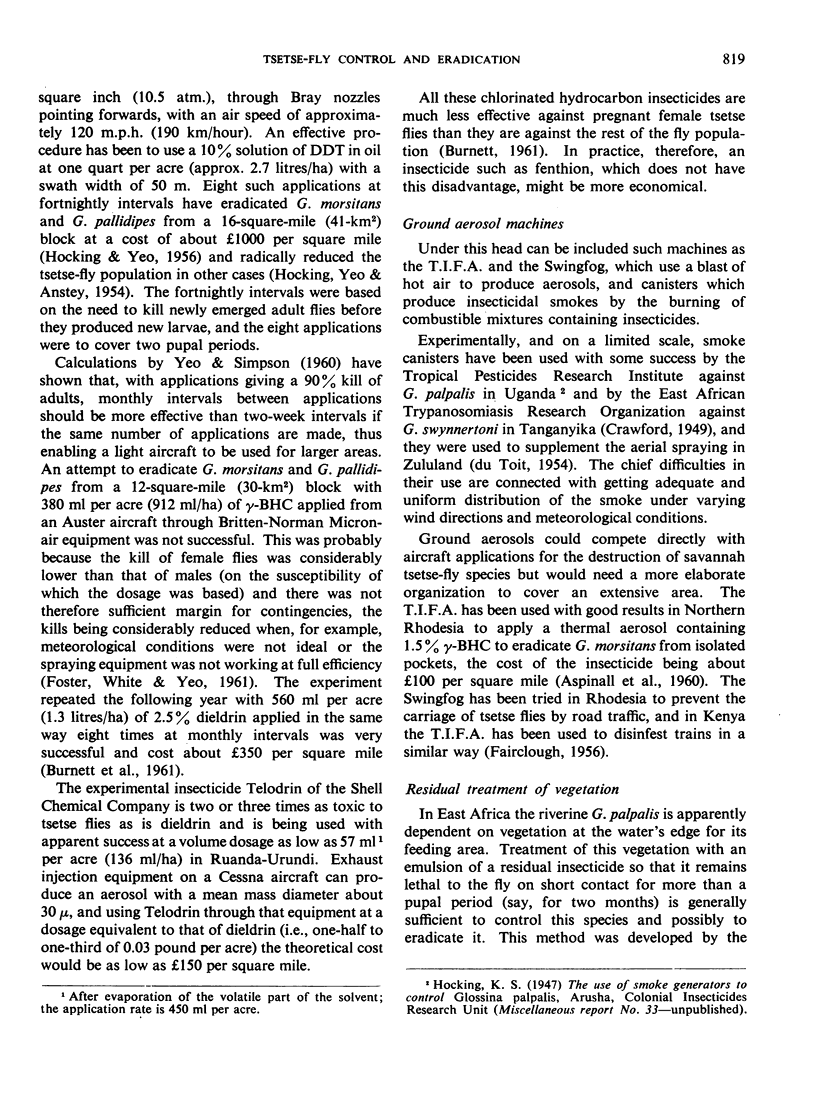
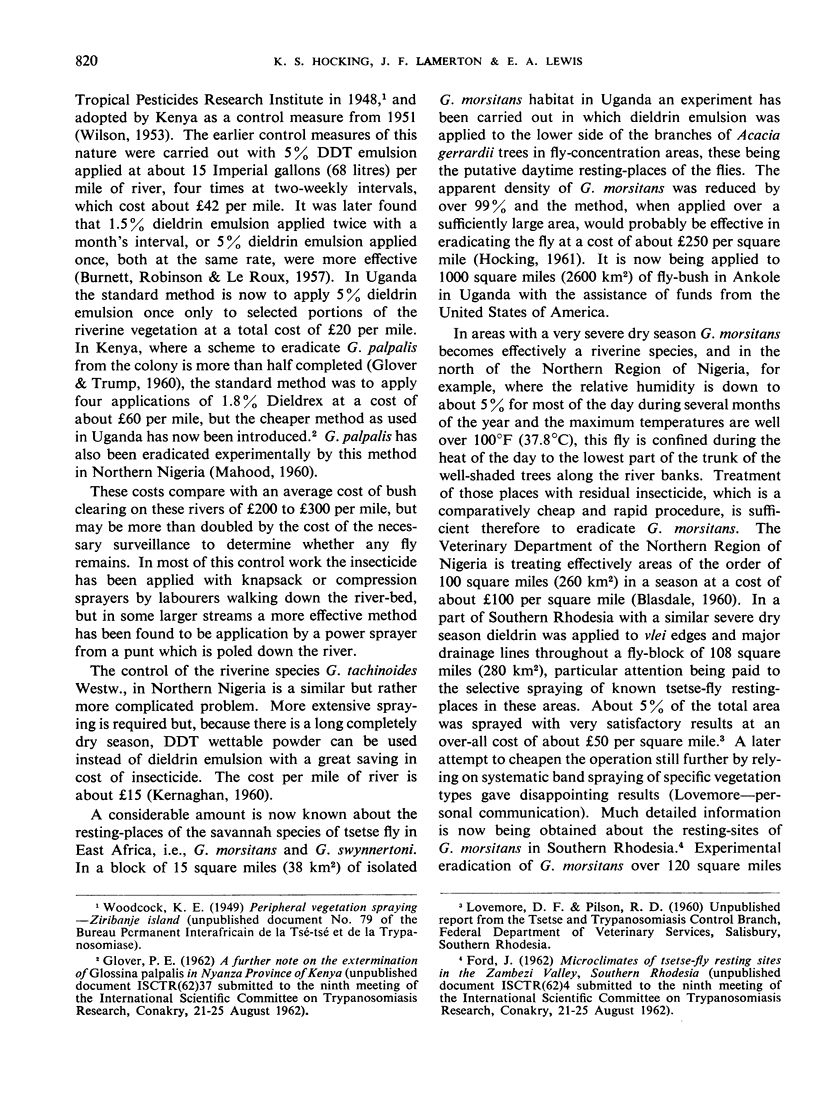
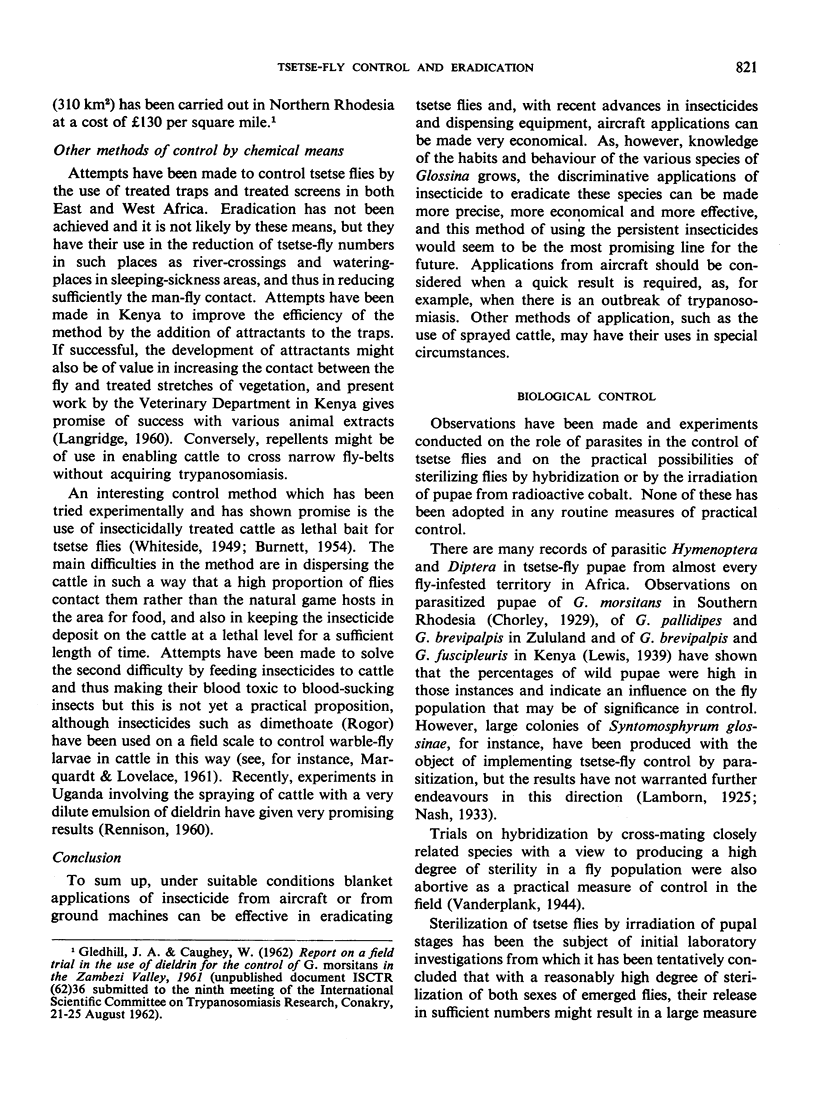

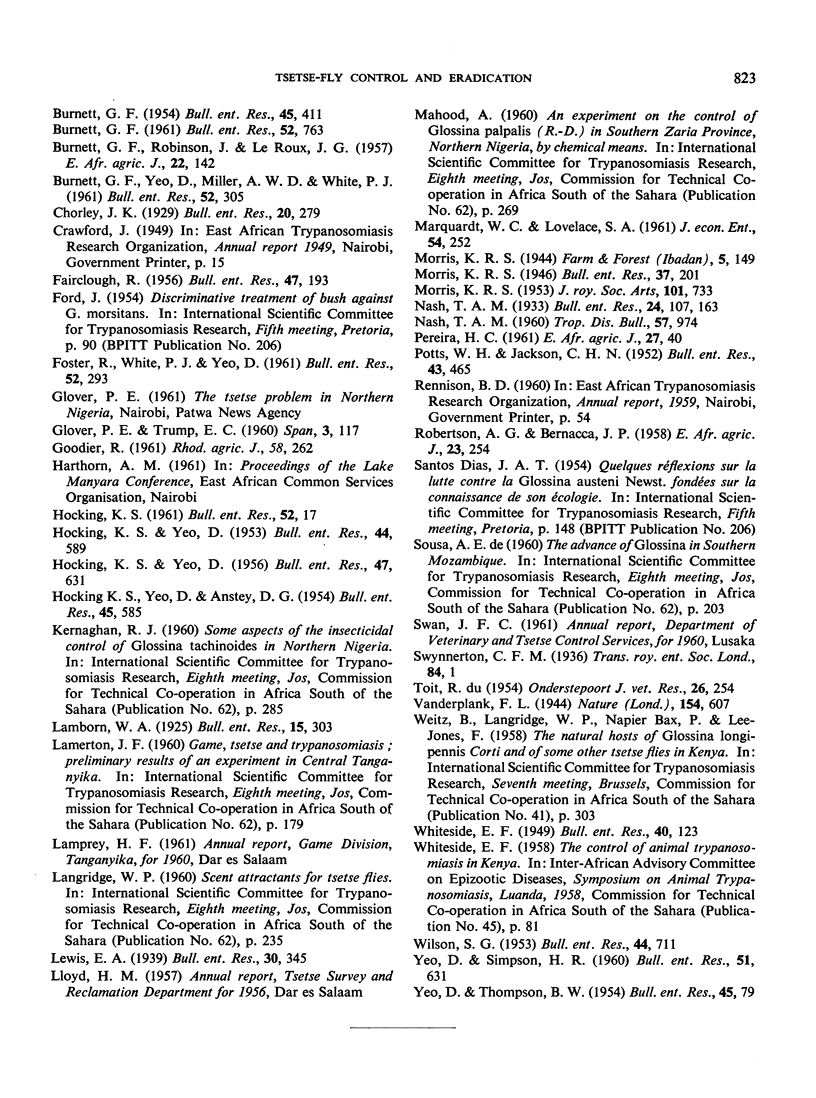
Selected References
These references are in PubMed. This may not be the complete list of references from this article.
- APTED F. I. Sleeping sickness in Tanganyika, past, present, and future. Trans R Soc Trop Med Hyg. 1962 Jan;56:15–29. doi: 10.1016/0035-9203(62)90086-x. [DOI] [PubMed] [Google Scholar]
- ASHCROFT M. T., BURTT E., FAIRBAIRN H. The experimental infection of some African wild animals with Trypanosoma rhodesiense, T. brucei and T. congolense. Ann Trop Med Parasitol. 1959 Jun;53:147–161. doi: 10.1080/00034983.1959.11685912. [DOI] [PubMed] [Google Scholar]
- WHITESIDE E. F. An experiment in control of tsetse with DDT-treated oxen. Bull Entomol Res. 1949 May;40(1):123–134. doi: 10.1017/s0007485300022756. [DOI] [PubMed] [Google Scholar]


